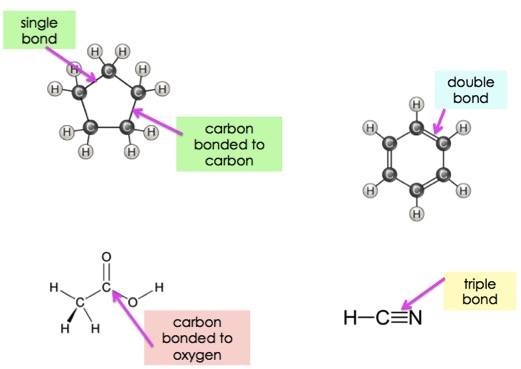Cảbon – Dive into the limitless possibilities!
Crafting jewelry with carbon-based diamonds to show the essence of eternal love, each facet representing cherished moments.
Cảbon, an elemental building block of life, is an intriguing and versatile element that plays a crucial role in various aspects of our existence.
All About Carbon- Discover the magic!
Explore the atomic details: atomic number 6, symbol C, and its prevalence in various forms across Earth’s crust. There are some forms of cảbon
1-Diamond:
Diamonds, those dazzling gemstones formed under intense pressure and heat within the Earth’s mantle, are indeed a marvel.
Their allure goes beyond their exceptional hardness; they possess a captivating beauty and a storied history, making them iconic symbols of luxury, love, and endurance.
At their core, diamonds are composed of carbon atoms arranged in a crystal lattice structure, where each carbon atom forms strong covalent bonds with four neighboring carbon atoms.
This unique arrangement contributes to their remarkable hardness, making them the hardest known naturally occurring substance.
2-Graphite:
Graphite’s distinct characteristics stem from its atomic structure. Unlike diamonds, which have a tightly bonded crystalline structure, graphite consists of layers of carbon atoms arranged in a hexagonal lattice.
These layers are weakly held together by van der Waals forces, allowing them to slide over each other easily. This arrangement creates a material with a slippery, lubricating feel and a soft, easily malleable nature.
The layers in graphite have a two-dimensional structure, making it an excellent conductor of electricity and heat along the planes of its layers.
This property is due to delocalized electrons within the layers that can move freely, enabling the flow of electrical current.
This conductivity makes graphite invaluable in electronics, batteries, and various industrial applications requiring a conductive material.

3-Carbon Nanotubes:
The journey of carbon nanotubes from scientific curiosity to transformative technology exemplifies the power of nanoscience and nanotechnology to revolutionize industries.
As researchers unravel their properties and explore new applications, carbon nanotubes are poised to play a pivotal role in shaping the future of materials, electronics, medicine, and beyond.
Their exceptional strength, conductivity, and versatility make them a driving force in the ongoing quest for innovative solutions across diverse sectors.
Cảbon Compounds – Let’s explore together!
1- Organic Compounds:
Carbon’s significance in organic chemistry is fundamental, serving as the cornerstone of life and contributing to the intricate complexity of biological molecules.
Carbon is like the Lego of life, forming the backbone of molecules in everything from our DNA to food. Its unique bonding powers allow for endless possibilities, creating a diverse world of living organisms.
2- Inorganic Compounds:
In inorganic chemistry, carbon compounds abound, demonstrating the element’s adaptability extending beyond organic chemistry. This showcases carbon’s versatile nature across diverse chemical domains.
Even outside life’s building blocks, carbon joins forces with other elements, forming compounds vital in industry, technology, and everyday products.
Its flexibility in bonding makes it a key player, shaping materials and innovations across various chemical fields.
Elemental cảbon Disclosure – Uncover the secrets!
Carbon’s versatility is truly astounding, as it is the building block for an incredible array of materials and compounds, playing an essential role in the natural world and modern technology.
One of the most fascinating aspects of carbon is its ability to form strong covalent bonds with other carbon atoms and various other elements.
This property allows carbon to create an extensive range of structures and compounds with diverse properties.
The Role of cảbon in Life and Biochemistry- Let’s embark on this!
Carbon’s role in life’s chemistry is indeed pivotal and incredibly diverse. Its ability to form strong covalent bonds and create long chains or intricate structures is foundational to the complexity and diversity observed in biological systems.
Organic molecules, the building blocks of life, owe their existence and diversity primarily to carbon’s unique bonding capacities.
Carbon’s four valence electrons allow it to form stable bonds with various other elements, mainly hydrogen, oxygen, nitrogen, and sulfur.
This versatility enables carbon to create chains, rings, and complex three-dimensional structures, forming the backbone of many molecules crucial for life.
Cảbon’s Impact on Energy – Join the journey towards!
This adds to the greenhouse effect, influencing Earth’s climate and global warming.
1- Improving Energy Efficiency:
Improving energy efficiency in various industries remains crucial in reducing overall energy needs and thus cutting down carbon emissions.
This requires technological advancements, strategic architectural designs, and optimized transportation systems to reduce energy usage.
2- Climate Change:

The critical impact of carbon on sustainability lies in CO2’s role in climate change. Increased atmospheric CO2 traps heat, resulting in higher global temperatures, shifts in sea levels, and disturbances in weather patterns.
3- Assessing Material Carbon Footprints:
Assessing the carbon footprint of materials involves examining their complete life cycle, encompassing production, utilization in construction and manufacturing, transportation, and eventual disposal.
To sum up, the impact of carbon on energy and sustainability highlights the urgency to shift towards low-carbon and renewable energy.
Also read: Andrew Weissmann Wife Photo – A Closer Look At His Family!
Carbon Sequestration – for a Greener Future!
The natural environment plays a crucial role in regulating carbon levels, primarily through carbon sinks like forests, oceans, and soil.
These ecosystems act as vital carbon reservoirs, absorbing more carbon dioxide from the atmosphere than they release, helping to maintain a balance in carbon levels.
Forests, for instance, are exceptional carbon sinks. Trees absorb carbon dioxide during photosynthesis, utilizing it to grow while storing carbon in their biomass and soil.
However, deforestation and forest degradation disrupt this balance, releasing stored carbon into the atmosphere and reducing the forest’s capacity to sequester more carbon.
Cảbon’s Unique Properties – Explore Sustainable!
This capacity to form four strong bonds is the cornerstone for an extensive array of compounds, forming the fundamental basis of organic chemistry.
Beyond its characteristics, carbon thrives on bonding, forging robust covalent links that give rise to a vast spectrum of enduring molecules.
Carbon’s knack for forming quadruple bonds fuels the creation of diverse organic compounds, defining the very essence of this branch of chemistry.
Its relentless bonding prowess births many stable, long-lasting molecules, shaping the foundation of organic chemistry’s rich diversity and complexity.
Natural origins and production methods of carbon – Discover Its Origins!
1- Coal and Peat:
Throughout history, carbon has been closely associated with the preserved remnants of plants, namely coal. These natural reservoirs have fueled societies and industries for extended periods.
2- Wood and Coconut Shells:
Wood and coconut shells, primarily composed of carbon, represent renewable and versatile resources.
Both wood and coconut shells demonstrate the versatility of carbon-rich materials, contributing to various industries while embodying eco-friendly and renewable resource utilization.
Uses of Cảbon in Materials Science – its incredible impact!
1- Reinforcement:
Carbon fibers, obtained via complex carbonization procedures, are robust reinforcements for diverse materials. Woven into the fabric of progress, these fibers aid in crafting structures known for enduring challenges and the passage of time.
2- Adsorption:
Carbon’s surface, hosting distinct properties, makes it a prime choice for adsorption uses. Its interaction with water impurities is vital in purifying water sources, ensuring enhanced cleanliness and safety.
Additionally, carbon’s adeptness in adsorption significantly improves air filtration technologies in air quality enhancement.

3- Catalysis:
Within the complex chemical reactions, carbon-based catalysts take on the role of silent architects, guiding processes with remarkable efficiency. These catalysts hold a crucial place in pharmaceutical synthesis, aiding in creating vital compounds.
Frequently Ask Questions:
1. What is carbon and its significance?
Carbon is a chemical element (atomic number 6) crucial to life, found in various forms like diamonds, graphite, and more. Its significance lies in its role as the building block of organic compounds.
2. How does carbon impact the environment?
Carbon emissions, particularly carbon dioxide (CO2), contribute to the greenhouse effect, leading to climate change and various environmental issues such as rising temperatures and sea-level changes.
3. How does carbon contribute to water and air purification?
Carbon’s surface properties make it effective in adsorption, aiding in water purification by removing impurities and enhancing air quality through improved filtration technologies.
4. What role does carbon play in catalysts?
Carbon-based catalysts drive chemical reactions efficiently, crucial in pharmaceutical synthesis and optimizing energy production processes.
Conclusion:
Carbon’s versatility fuels innovation across industries, shaping life, technology, and sustainability. From diamonds to cutting-edge technology, its impact resonates in chemistry, industry, and our environmental future.
Read more:






